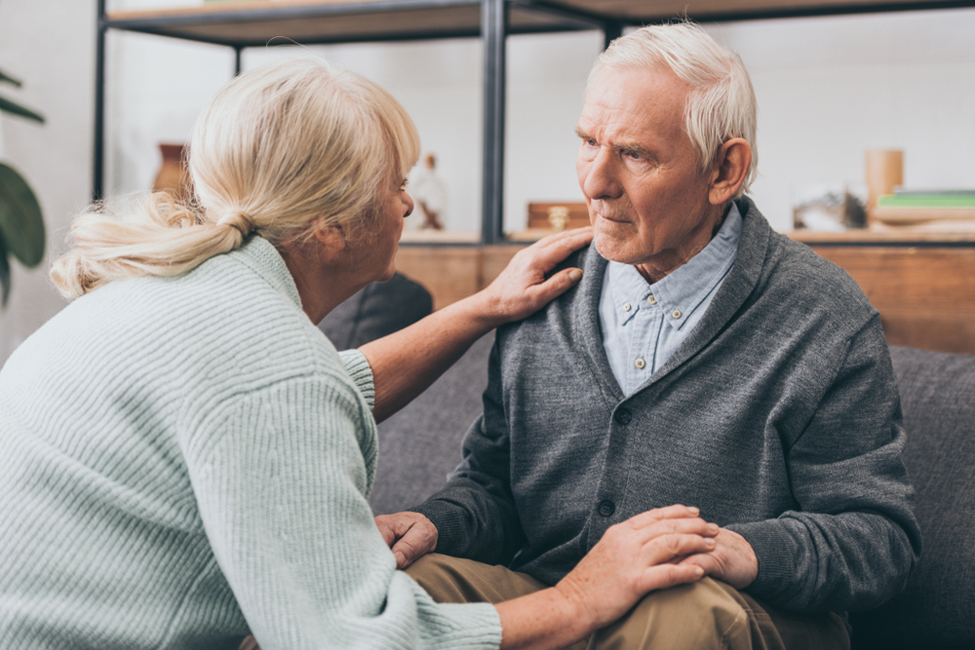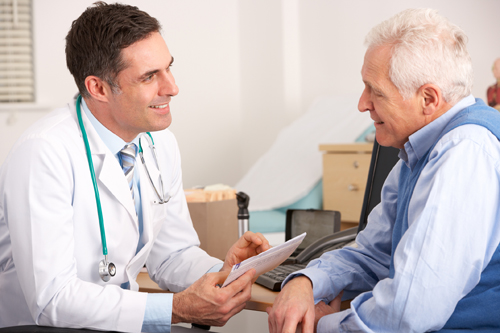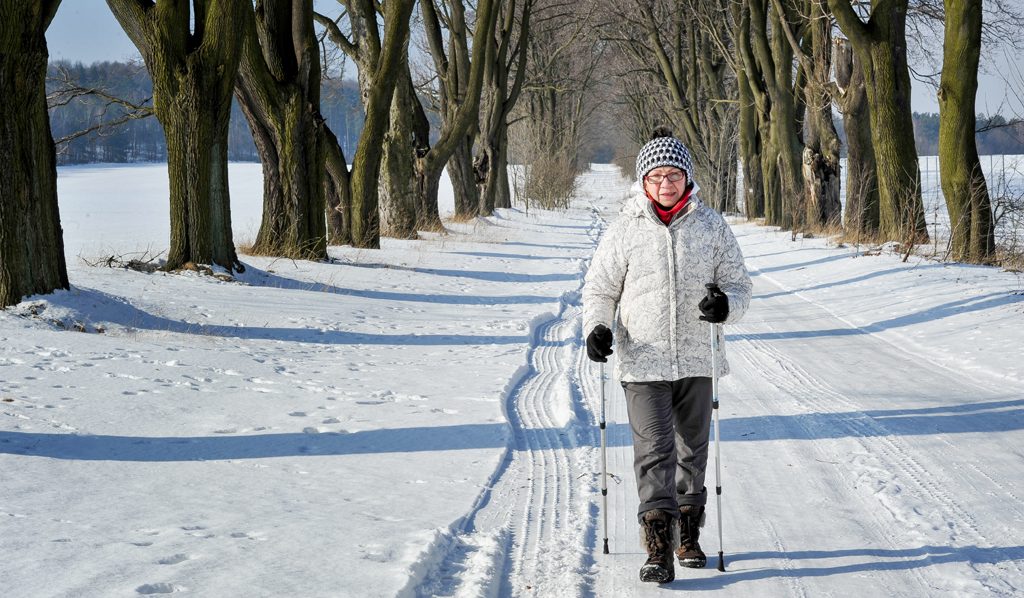Halloween Safety Tips for Seniors
Halloween can be fun for kids and adults alike, but for some seniors – especially those who live alone – it can be a frightening time. Masked strangers and constant knocking can contribute to uneasiness during the holiday. Constantly getting up and down to answer the door can increase the risk of a fall.
There’s also the fear of unexpected pranks and possible vandalism: Insurance claims show that Halloween is one of the worst days of the year for homeowners and auto claims related to theft and vandalism.
But that doesn’t mean older adults should get spooked by Halloween. After all, why should they miss out on the fun? By following a few Halloween safety tips for seniors, it can be a joyous and rewarding evening no matter what your age.
Halloween Safety Tips for Seniors
- Go outside to give out candy, if possible.
Never let trick-or-treaters into your house or let anyone in to use the phone or bathroom. If weather permits, hand out candy from the porch. If you can’t go outside to hand out candy, use the peephole to see who’s at the door before opening it. - Keep pathways well lit.
That way you can see who’s there and you can be seen. Pathways also may have uneven pavement or bricks or may be slippery from rain. Reduce your fall risk by staying close to your home in a well-lit and open area. - Don’t let decorations impede the view.
Make sure they don’t block the light or views of main entrances, such as the front door, and make sure they aren’t in the way of trip trick-or-treaters. - Don’t use lighted candles as a decoration.
Lighted candles can be a hazard to you and to trick-or-treaters, whose costumes could catch fire. Use battery-operated candles instead. - Clear floors and hallways.
Make sure there aren’t obstacles on your path to the door. That includes stray cords, shoes, books, or other things that could trip you and cause you to fall. - Remember: You’re never too old to dress up!
If you dress up, be sure the mask (if you wear one) provides a clear view. Your costume should allow easy movement and shouldn’t be a falling or tripping hazard. - Invite a friend or family member over to help.
If you feel uncomfortable giving out candy by yourself, having someone with you may make it less stressful and more fun!
Safety Tips for Seniors with Dementia

Seniors with dementia or Alzheimer’s disease, who may already be anxious, may find Halloween especially upsetting. Halloween can be confusing and can trigger behavioral problems because of environmental changes, strange people in and around the house, masked visitors, misperceived threats and fear of the unknown.
Also, Halloween occurs around sundown, which can be a particularly difficult time of the day for people with dementia. Sundowner’s Syndrome is a state of confusion occurring in the late afternoon and spanning into the night that occurs in people with dementia and Alzheimer’s disease.
Never leave a person with dementia at home alone on Halloween. Have someone stay with them or take them to another setting such as an event at a senior center or a family member’s home for a few hours.
Tips for Seniors Who Don’t Want to Give Out Candy
If a senior has dementia, is physically unable, or doesn’t want to hand out candy themselves, there are a couple of things they can do:
- Put candy in a bowl on the porch with a sign that says, “One candy per person, please.”
- Ask a neighbor to give out candy for you and put a sign on the door that says, “Candy for this house being given out next door.”
There’s some debate over whether to leave a light on outside if you aren’t giving out candy at all. On one hand, leaving the light off is a sign that no candy is being given out. But it’s also a sign there’s no one home, increasing the risk of vandalism or burglary. It may be better just to leave the porch and inside lights on and put a sign on the door that says, “Sorry, no candy at this house.”
* * *
According to the AARP nearly 90% of older adults want to age in place and maintain their independence. An important factor in aging in place is a safe home with minimal risks. The Maine Move can perform a safety assessment to identify risk factors and help get necessary modifications made. Up to 50% of home accidents among seniors can be prevented by proper home modifications and repairs!
Call us for a complimentary consultation to assess your needs 207-313-3797.
Falls Prevention Day was last month, but every day is a good time to talk about the serious issue of senior falls. Did you know that more than one out of three people over the age of 65 falls each year and falls are the leading cause of fatal injury in seniors?
Falls can pose a very real risk to your independence, your health and your life – and falling once doubles your chances of falling again. Not only can a fall cause serious injury, it also comes at a cost: In 2020, the cost of falls in the elderly is expected to reach $6.7 billion. Much of that cost is paid by Medicare, but in 2015, about $12 billion was paid by private insurers (which can result in rate increases), and families.
The good news is that while senior falls can’t be prevented completely, there are things you can do to lower your risk of falling.
Why Seniors Fall
While the risk of falling rises with age, falls aren’t an inevitable part of aging: There are several reasons for senior falls. Any one of them, or a combination of two or more, can increase your chance of falling. The more risk factors you have, the greater the chance you will fall.
Here are some of those factors, along with what to do about them:
Poor eyesight
Eye disease or failing vision can make you misinterpret what you see or not see a hazard at all.
What to do: Have your eyesight checked regularly, and if you are prescribed glasses, be sure to wear them. If you have a new prescription, take time to get used to your new glasses.
Medical conditions
Conditions such as diabetes, heart disease, or problems with your thyroid, can affect your balance.
What to do: Be sure to see your doctor regularly and tell them if you are having balance issues. Your health is an important factor in preventing falls.
Lower body weakness
Weakness or pain in the back, hips, or legs can affect your balance.
What to do: Use an assistive device, such as a cane or a walker. The cane should be the right size for you and the walker wheels should roll smoothly. Be sure to consult your doctor about choosing the right device.
Prescription medication

Talk to your doctor about medications that may put you at risk of falling.
Some prescriptions can cause dizziness or confusion. If you’re on several medications, the combined effect may cause balance issues.
What to do: Talk to your doctor or pharmacist if your medication makes you dizzy or confused. It’s possible you may need a change in the dosage, or a different medication may be needed.
Foot problems and unsafe footwear
Foot problems can affect your balance and wearing the wrong footwear can be a cause for senior falls.
What to do: Wear rubber-soled, no-skid shoes, or lace-up shoes with non-skid soles that fully support your feet. Women should forgo high heels and stick to low heels.
Decreased endurance and slower reflexes
You aren’t quite as strong or nimble as you once were. Slower reflexes make it more difficult to react to the unexpected and lower endurance means you tire more easily. When you’re tired, it’s much easier to trip and fall.
What to do: Talk to your doctor about physical exercise that works for you. Regular exercise strengthens muscles and increases endurance. It helps with flexibility. And it’s good for your mental health, too!
Fear of falling
Believe it or not, being afraid of falling puts you more at risk of falling! Sometimes older people avoid outside activities because they’re afraid of falling. But not exercising and keeping active leads to a decrease in muscle strength, endurance and flexibility, which in turn put you at risk of falling.
What to do: Talk to your doctor. They can assess your medical health and reassure you about your risk. Perhaps try exercises such as tai chi or yoga that will help strength and boost confidence. Don’t be afraid to be active!
And of course, be sure to get plenty of sleep and avoid excessive alcohol.
Outdoor falls

About one-quarter of all falls occur outside, but near your home. When outside:
- Watch for uneven sidewalks or cracks in the sidewalk; walk on grass if you don’t feel comfortable on pavement.
- Be sure to wear your prescription eyewear when walking outside.
- Use extra care when there’s rain, snow or ice.
- Wear comfortable shoes with non-skid soles.
- Be aware of curbs and changes in elevation.
- Take your time.
Risk factors at home
Right inside your home there may be many risk factors you never thought about. Six out of 10 falls happen in the home. Here are some ways to make your home safer and to lower your risk for falling:
Staircases
- Clear staircases of all objects such as books, baskets and shoes.
- Put a rail on each side of the staircase and make sure the rails are secure.
- Don’t use scatter or small area rugs – especially at the top or bottom of stairs.
Kitchen
- Keep items on lower shelves
- Never use a chair as a stepstool. If you need a stepstool, get one with a railing.
- Get a “reach stick” grabbing tool at a local hardware store or medical supply store for hard-to-reach items.
Living areas
- Make sure the home is well lit, especially at the top and the bottom of staircases.
- Keep the main walkways in the house neat and make sure there are no books, shoes, or other objects in the way.
- Tape the edges of large area rugs or affix them to the floor to prevent tripping.
- Put no-slip strips on tile and wooden floors.
- Place electric cords and telephone wires neatly near walls and away from walking areas.
- Arrange or remove furniture so there is plenty of room for walking.
- Keep items you use often within easy reach.
- Be aware of where your pet is whenever you get up or walk around.
Bedroom
- Use a night light and have light switches close to your bed.
- Keep a flashlight by your bed in case the power is out, and you need to get up.
- Keep your telephone near your bed.
Bathroom
- Install grab bars in the tub/shower and near the toilet. Consider using a shower chair and hand-held shower.
- Place non-skid mats, strips, or carpet on all surfaces that may get wet.
- Have a night light in the bathroom.
Get a Home safety assessment
One way to reduce the risk of senior falls is to make sure your home is safe and presents a low fall risk by doing an in-depth risk assessment. A home safety assessment is especially important for those who wish to age in place. Up to 50% of home accidents among seniors can be prevented by proper home modification and repairs. We can assess your home’s safety, recommend the necessary modifications to make your home environment safe. For more information, go to https://themainemove.com/our-services/home-safety-assessments/ or call for a free consultation: 207-313-3797.